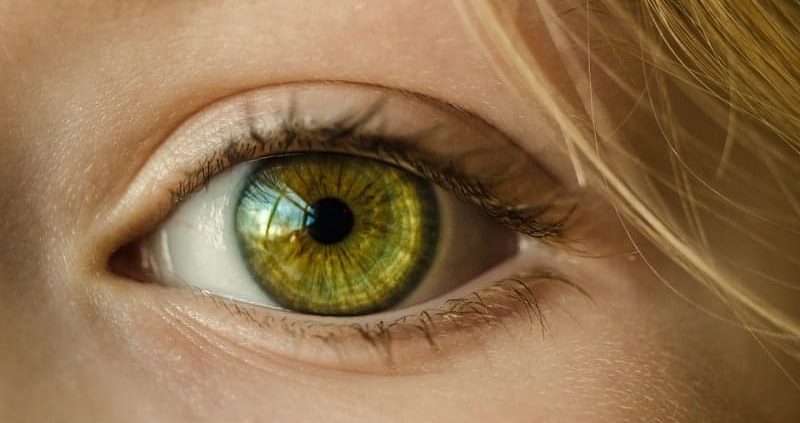If you are suffering from scotoma, than you look no further below are the few effective ways home remedies to get rid scotoma issue.
Scotoma can affect one or both of the patient’s eyes. In this, the center or the edges of your visual field might get affected. For few lucky ones, the condition is temporary. But, in most cases it is permanent.
There are many possible causes of scotoma. The disorder is extremely weakening and influences your day to day life to a great extent. It might make your day to day life difficult.
Don’t worry we have done a lot of research and come with few effective ways to help you deal with the symptoms of the scotoma.
The home remedies to get rid scotoma given in this article will not only help you teat your symptoms but also slowly and readily provide a cure to the condition.
Table of Contents
Home Remedies To Get Rid Of Scotoma
Scotoma is a troublesome condition that is difficult to treat completely. But, with a little lifestyle change, you can control scintillating scotoma which is temporary and occurs before the occurrence of migraine pain.
These are a few tips on how to deal with scotoma:
1. Stress Management

Try and manage stress in your life. Indulge in activities that will calm you down like walking or meditation. Stress can be a major cause of scintillating scotoma.
2. Do Not Spend A Lot Of Time In Front Of The Computer

If you are into a profession that requires long hours of sitting in front of the computer, which is the reality about most professions these days, make sure you take breaks in between. Follow the 20-10 rule. Take a 10-minute break after spending 20 minutes in front of the computer.
3. Exercise
Exercise is the solution to most problems of your body. Do it at least three times a week. Accompany your regular exercises with eye exercises as well because that will provide relief your eyes.
4. Dietary Changes
Avoid food items like MSG, chocolate or aged cheese that might trigger an inflammation reaction in your eyes. Avoid a diet that includes refined grains or a lot of sugar. Limit your alcohol and soft drink intake.
5. Sleep Cycle

Maintain a regular sleep routine and get enough sleep during the night.
6. Supplements
You could take vitamins and supplements to improve your overall health condition.
7. Sunglasses
Make sure you put on wrap-around sunglasses that provide UVA and UVB protection whenever you are in the sun.
8. Smoking
Quit smoking. Smoking might cause macular degeneration.
9. Vitamin C

Increase your intake of Vitamin C. Consume more of tropical fruits, citrus fruits, pepper and other food items that are rich in Vitamin C.
10. Lifestyle Adjustment
If you are suffering from central scotoma, you can train yourself to use peripheral vision for viewing objects. When you use peripheral vision to view an object, it is termed as eccentric vision. Therefore, you use your rod cells (that is used in peripheral vision) instead of the defected cone cells.
-
Adjustment In Case Of Central Scotoma
In case of central scotoma, you could use large print while reading. You should also use higher levels of illumination and good contrast.
-
Self-Knowledge
See and find out what triggers an attack in case of the scintillating scotoma. This will help you analyze the cause and help you control it.
-
Caffeine
Stay away from caffeine and caffeine-containing products. Avoid food items like cocoa, chocolate, tea, and coffee.
-
Drugs That Should Be Avoided
Avoid drugs like Anacin, Excedrin, No-Doz, Vanquish and Vivarin as these contain caffeine and they may worsen your scotoma.
-
Hearing Protection
Stay away from loud noises. Use hearing protection if required.
-
Blood Pressure Control
If you are a patient of hypertension, make sure to keep your blood pressure under control.
Once it is established that you are suffering from scotoma, a proper treatment plan is to be made. Sometimes the treatment reduces the spot if no permanent damage was done. But, if permanent damage is done, the scotoma persists.
If there is an underlying cause, it is to be identified and treated accordingly. Advanced research in neuroplasticity can help in treating scotoma. The fact that the brain develops throughout your adulthood could help to improve things. It is important to prevent the dark spot of the eye from enlarging.
How To Prevent Scotoma?
We can prevent scotoma by controlling the factors causing it. We also have to make appropriate lifestyle changes. Also, treatment of other health conditions that causes scotoma helps to prevent it. Visual therapy like using phone keypads with large numbers or watching faces could help.
Types Of Scotoma
Broadly, scotoma has been classified into six categories. Although most of them are permanent, the type of scotoma associated with a migraine is temporary. It is experienced before the onset of the pain. It is inclusive of the minute changes of perception that occurs before the migraine attack. The various types of scotoma are as follows:
1.Scintillating Scotoma: Scintillating scotoma occurs before the onset of a migraine. The patient visualizes an erratic light in the form of an arc encroaching upon the field of vision.
2. Central Scotoma: Central scotoma is the most serious type of scotoma. In this case, a dark spot is formed in the central position of the visual field.
The visual field apart from this central dark spot remains mostly This forces the patient to focus on the visual field except for the central spot that is the peripheral visual field. Hence, the patient’s daily activities like driving become extremely difficult.
3. Peripheral Scotoma: Peripheral Scotoma is less serious than central scotoma. In peripheral scotoma, the edges of the visual field get darkened. The normal vision of the patient gets affected to a certain extent but not as much as in central scotoma. It is also easier to deal with peripheral scotoma than with central scotoma.
4. Hemianopic Scotoma: The word ‘hemi’ means half. In hemianopic scotoma, half of the visual field is affected. Hemianopic Scotoma can affect one or both eyes. But hemianopic scotoma mostly affects both the eyes. It is also known as homonymous hemianopsia.
5. Paracentral Scotoma: In paracentral scotoma the dark spot is seen in paracentral position. The paracentral region is next to the central region.
6. Bilateral scotoma: Bilateral scotoma is caused by some types of tumors. Here both the eyes of the patient are affected. It is rarer than other types of scotomata.
Causes Of Scotoma
It wouldn’t be completely accurate to call scotoma a disease on its own. It is more correctly described as a symptom of an underlying disease or cause. Thus it is imperative to point out the underlying cause. Treating the cause would help to treat the scotoma as well. The various causes of scotoma are as follows:
- A disease or trauma to the brain might cause scotoma. A coup-contrecoup trauma to the brain might result in scotoma. In this type of trauma, the brain barges into the skull, during the injury, and then barges into the opposite side of the skull.
- Other reasons that can cause scotoma are a stroke or a brain tumor. If the circulatory system of the eye is affected in some way a scotoma might be caused. Scintillating scotoma may be caused by spasms occurring in the eye arteries.
- Demyelinating diseases like multiple sclerosis damaged nerve fiber layer (due to hypertension or toxic substances), vascular blockage in the optic nerve or stroke are other causes of scotoma.
- If a tumor formed in the pituitary gland compresses the optic chiasm, bitemporal paracentral scotoma is seen, which is paracentral scotoma in both eyes. Bilateral hemianopsia is seen when the tumor enlarges and the scotomata are extended to the periphery. This causes the loss of vision in the peripheral regions of both eyes.
- Pregnancy induces hypertension or preeclampsia might also cause scotoma. Increased intracranial pressure also causes scotoma.
- Scotoma is also caused by streptomycin which is an aminoglycosidic antibiotic. A corrective surgical operation of the eye or an ocular infection could cause scotoma to the patient.
Symptoms Of Scotoma
The primary symptom of scotoma would be the appearance of a black spot when a person tries to look at people or things. We see one or more dark areas or blurred region.
The patient requires more illumination while reading. Perceiving colors might be difficult in some cases.
The retina of the eye contains nerves that perceive light and send visual messages to the brain. Areas on the retina those are unable to work even after light falls on them is referred to as scotomata. Though the dark spots are permanent in most cases, they might be shifting in nature in a few cases.
Recognizing people from a distance might be difficult for the patient.
Enlargement of the blind spot is seen in some patients.
1. Scintillating Scotoma
Scintillating Scotoma is also known as a visual migraine. It mostly occurs before a migraine attack but at times may occur without a headache.
It mostly begins as a flickering light spot in the visual field. We see the spot at the center or near the center of the visual field. This makes the vision of the patient unclear. The flickering area gradually increases.
Except the region affected by scotoma, the vision is perfectly normal. At this stage, better vision is obtained if objects are not seen directly. Scintillating scotoma without a headache is called acephalic migraine.
With the progression of scotoma, not only a flickering light but various patterns are also seen. At times a definite zig-zag pattern or dazzle camouflage pattern may be seen.
Dysfunction of parts of the occipital cortex is seen. Reading or driving becomes difficult during this period. It takes some time for the vision to become normal. Central vision is returned before peripheral vision.
Cause Of Scintillating Scotoma
Scotoma is mainly caused by the change in behavior pattern of brain nerves during a migraine attack. The factors that trigger a migraine attack are listed below. We have also listed other factors that cause scintillating scotoma:
a) Migraine is caused by hormones or genetic factors. Stress and some food items can also trigger migraine in susceptible individuals.
b) In women, change in levels of estrogen hormones can cause headaches. If a woman already suffers from migraine, she might get headaches before or during her periods as there is a considerable drop in the level of estrogen hormone. Migraines can also take place during pregnancy or menopause.
c) Development of migraines would mean the development of scintillating scotoma. High levels of tyramine also lead to scintillating scotomata.
d) Multiple sclerosis is another cause that could lead to the formation of scintillating scotoma. Multiple sclerosis is associated with autoimmune disorders. When the immune system of your body attacks and destroys the body’s own tissues, it is termed an autoimmune disorder.
In case of multiple sclerosis, the myelin sheath (the protective layer of nerves) gets destroyed. This might lead to damage of your nerves. This disrupts proper communication in the body. Thus, multiple sclerosis could cause scintillating scotoma. It might even lead to complete blindness.
e) Optic neuritis may also cause scintillating scotoma. Inflammation of the optic nerve, which is the most important nerve in your eye, is called optic neuritis. Nerve disease or infection could lead to optic neuritis.
f) Schilder’s disease or neuromyelitis optica are other diseases that could cause optic neuritis.
Scintillating scotoma lasts less than an hour. It could lead to a headache with aura or not (as in case of an acephalic migraine). Sometimes fatigue, nausea, and dizziness are seen as after effects.
When To See A Doctor?
It is advisable to consult an ophthalmologist once you experience scotoma. If your scotoma is temporary, you need to treat a migraine that is causing it and make appropriate changes.
If your scotoma is permanent, the doctor will take measures to improve your condition. There is little that needs to be done in case of peripheral scotoma. Visual tools can be in case of the central scotoma. We can use radiation therapy or radiosurgery at times.
Psychological scotoma:
When we are discussing about scotoma, it would be interesting to have some knowledge about psychological scotoma. ‘Psychological scotoma‘ is the act of turning a blind eye to information that would make us uncomfortable or is not so convenient for our ego. Here, you may notice a conflict between your beliefs, opinions, and behavior. It is a type of psychological disorder.
Final Talk
To put it simply, we all have blind spots in our eyes. But it normally does not affect us. In scotoma, multiple blind spots appear that affects the visual field.
Though it is not completely curable, a little change will help the patient to deal with it. Peripheral scotoma does not affect the patient’s lifestyle. But, central scotoma could cause considerable discomfort to the patient. Be healthy and safe!





